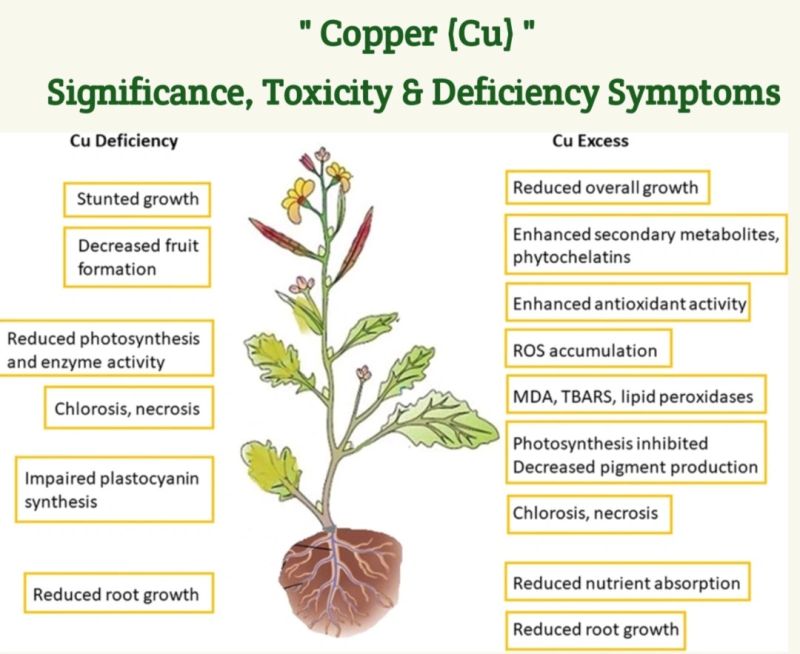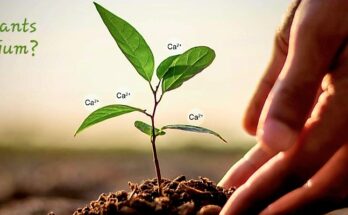
Copper (Cu) is one of eight essential plant micronutrients. Copper is required for many enzymatic activities in plants and for chlorophyl and seed production.
Deficiency of copper can lead to chlorosis, stunted growth, poor seed production etc.
Excess copper in the soil can lead to problems like reduce overall growth, root damage, growth inhibition, leaf discoloration etc.
🍁 The Role of Copper in Plant Production:
Copper is a micronutrient required in small quantities, but it plays a significant role in plant development. Here’s how copper benefits plants:
▪️Photosynthesis: Copper is a vital component of enzymes involved in photosynthesis, the process by which plants convert sunlight into energy and produce food. Without copper, plants struggle to capture and utilize solar energy effectively.
▪️Respiration: Copper is essential for plant respiration, allowing them to take in oxygen and release carbon dioxide. This metabolic process is crucial for energy production and growth.
▪️Nutrient Uptake: Copper aids in the uptake of other essential nutrients, like iron and nitrogen. It helps maintain nutrient balance in plants, ensuring healthy growth.
▪️Cell Wall Formation: Copper is involved in the synthesis of lignin, a component of plant cell walls. This strengthens plant structure and helps them resist diseases and environmental stress.
🍁 Copper Toxicity:
Excess copper can cause problems as:
▪️Root Damage: High copper levels can damage plant roots, reducing their ability to take up water and nutrients from the soil.
▪️Growth Inhibition: Excess copper can inhibit plant growth, resulting in stunted development, smaller leaves, and reduced crop yield.
▪️Leaf Discoloration: Copper toxicity can cause leaves to turn brown or develop necrotic spots, affecting photosynthesis.
▪️Iron Uptake Interference: Excessive copper can disrupt the absorption of iron, leading to iron deficiency, which is harmful to plants.
🍁 Copper Deficiency Symptoms:
Copper deficiency is less common than toxicity but can also have severe consequences.
▪️Chlorosis: Copper-deficient plants often display chlorosis, where leaves turn yellow due to a lack of chlorophyll production.
▪️Reduced Seed Production: Copper deficiency can lead to poor seed formation and reduced crop yields.
▪️Stunted Growth: Affected plants may exhibit stunted growth, with shorter stems and smaller leaves.
▪️Twisted or Curled Shoots: New growth may appear distorted, twisted, or curled, as copper is needed for proper cell division and elongation.
🍁 It is crucial to maintain the right balance of copper, as both excess and deficiency can harm plant productivity. Farmers should monitor soil conditions and use appropriate fertilizers to ensure that plants receive the optimal amount of copper to thrive.
Also read about: All about Sulphur
©Rahul Padwal
Pune, India 🇮🇳
#sustainableagriculture#agriculture#organicfertilizers#organicfarming#soilhealth



